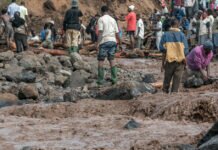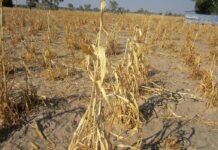Dry weather will be experienced in the greater Horn of Africa region from June to September, amid the risk of worsening an already precarious food security situation, the Intergovernmental Authority on Development (IGAD), an East African bloc, said in its latest prediction released on Wednesday.
The IGAD Climate Prediction and Applications Center (ICPAC), based in the Kenyan capital of Nairobi, said Djibouti, Eritrea, central and northern Ethiopia, northern Uganda, much of South Sudan and Sudan will receive depressed rains from June to September.
Guleid Artan, director of the ICPAC, noted that June to September rainfall season contributes more than 50 percent of annual total rainfall in the greater Horn of Africa region, adding that if suppressed, they could escalate the food crisis.
“The conditions we forecast could very well increase food insecurity in the region,” Artan said.
Depressed rainfall, coupled with warmer than usual temperatures, are likely to affect crop productivity, with the risk of crop wilting and a hastened decline in pasture and water availability, Artan added.
Noting that 49 million people in the IGAD region were still food insecure, Artan urged governments and relief agencies to mobilize resources in a bid to avert a humanitarian crisis.
Most parts of the Horn of Africa region recorded above-average March to May rainfall, bringing some respite to communities reeling from five consecutive failed rainfall seasons in Ethiopia, Kenya and Somalia, according to Hussen Seid Endris, a climate modeling expert at the ICPAC.
Seid warned of a likelihood of El Nino weather phenomenon between July and September in the Horn of Africa region, characterized by warm temperatures and depressed rains.
He clarified that the severity of the El Nino season in the region, associated with record high temperatures, is yet to be ascertained, adding that adequate preparations to minimize its negative impact on livelihoods were critical.
Xinhua














































